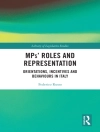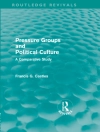The war in Ukraine has been fought with, among others, irregular armed groups since 2014—volunteers, paramilitaries, and mercenaries. Based on interviews in the Russian-controlled Donbas and with Ukrainian combatants, the contributions to this volume disclose various micro-dynamics of the mobilization, group formation, and fighting. Who were these fighters and who organized them? Russia has been increasingly employing mercenaries as a way to conduct undeclared, but ruthless wars beyond her borders. Ukraine’s formation of irregular armed groups in 2014 was a response to the army’s initially glaring inability to counter Russia’s military intervention. Most of the irregular battalions acted from the beginning under governmental orders. They have never operated autonomously, but compensated for operational weaknesses of regular armed groups. The initially high power of irregular battalions derived from state support, the capabilities of commanders, social networks, and the faculties of the fighters.
Om författaren
Theresa Luetkefend is an assistant director in the Atlantic Council’s Forward Defense program, where she leads the program’s defense strategy and military operations portfolio. Theresa previously worked at the Berlin-based Global Public Policy Institute (GPPi) on a number of security-related issues, including the reintegration of veterans in Ukraine. Prior to her time at GPPi, she spent several months at the United Nations Secretariat in New York. Theresa holds master’s degrees in Russian and East European Studies from the University of Oxford and in international relations with a focus on strategic studies from the Johns Hopkins School of Advanced International Studies. She received a bachelor’s degree in social sciences from Humboldt University in Berlin.












